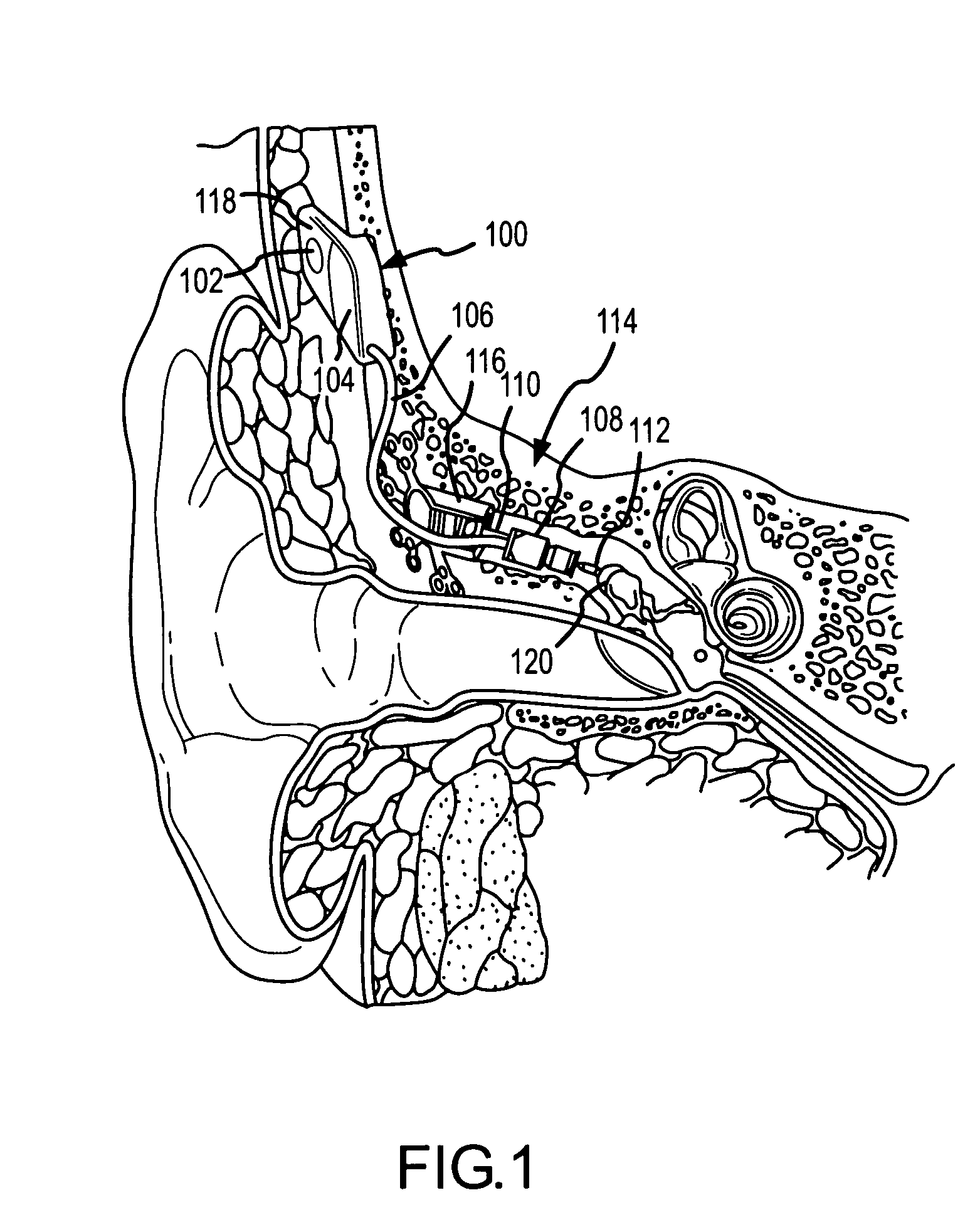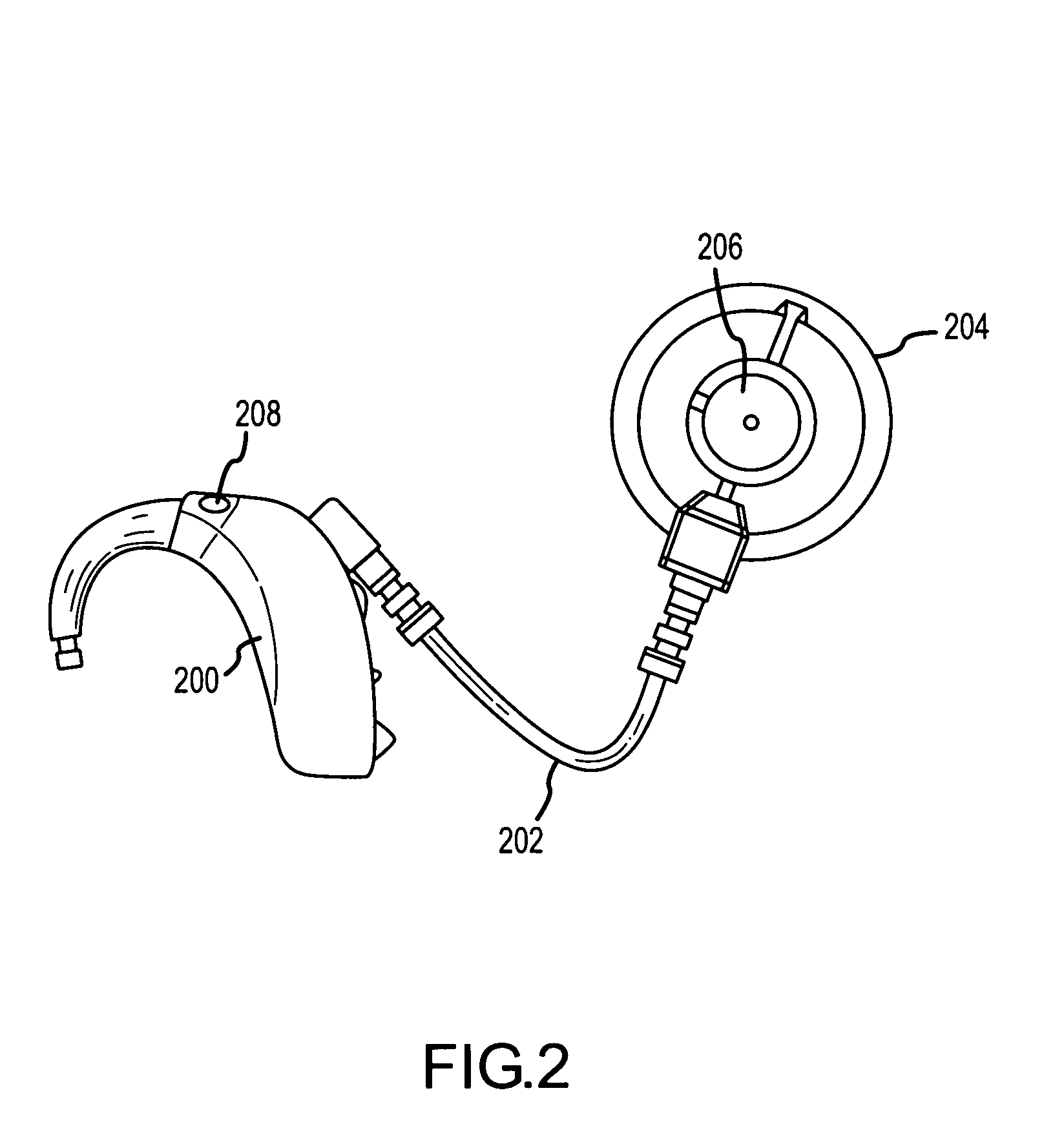Method for obtaining diagnostic information relating to a patient having an implanted transducer
a transducer and diagnostic information technology, applied in the field of hearing aids, can solve the problems of degrading the performance of the mechanical aspect (moving the actuator), the vibration may not be effectively communicated, and the biological aspect performance is degraded, so as to improve the interfacing and simplify the implantation procedure.
- Summary
- Abstract
- Description
- Claims
- Application Information
AI Technical Summary
Benefits of technology
Problems solved by technology
Method used
Image
Examples
Embodiment Construction
[0028] Reference will now be made to the accompanying drawings, which at least assist in illustrating the various pertinent features of the present invention. In this regard, the following description is presented for purposes of illustration and description and is not intended to limit the invention to the form disclosed herein. Consequently, variations and modifications commensurate with the following teachings, and skill and knowledge of the relevant art, are within the scope of the present invention.
[0029]FIGS. 1 and 2 illustrate an example of a semi-implantable hearing aid system having implanted components shown in FIG. 1, and external components shown in FIG. 2. As will be appreciated, the present invention may also be employed in a substantially similar manner with a fully implantable hearing aid, wherein all components of a hearing aid system are located subcutaneously. Therefore, the following description is provided solely for the purpose of illustration and not limitati...
PUM
 Login to View More
Login to View More Abstract
Description
Claims
Application Information
 Login to View More
Login to View More - R&D
- Intellectual Property
- Life Sciences
- Materials
- Tech Scout
- Unparalleled Data Quality
- Higher Quality Content
- 60% Fewer Hallucinations
Browse by: Latest US Patents, China's latest patents, Technical Efficacy Thesaurus, Application Domain, Technology Topic, Popular Technical Reports.
© 2025 PatSnap. All rights reserved.Legal|Privacy policy|Modern Slavery Act Transparency Statement|Sitemap|About US| Contact US: help@patsnap.com



